thermoplastic
Introduction
1.1 definition of thermoplastic and the concept of thermoplastic
1.2 History of thermoplastics and production technology
1.3 The importance of using thermoplastics in industry
Thermoplastic properties and characteristics
2.1 Appearance and molecular structure of thermoplastics
2.2 The effect of heat capacity and existing polymers on thermoplastic properties
2.3 types of thermoplastics and properties of each type
Thermoplastic production methods
3.1 Thermoplastic casting methods
3.1.1 Injection molding method
3.1.2 Pressure casting method
3.1.3 casting method of welding process
3.2 Other methods of thermoplastic production
3.2.1 Sheet and sheet manufacturing methods
3.2.2 Extrusion and penetration methods
Thermoplastic applications
4.1 Automotive and sports equipment industries
4.2 Electronics and electrical industry
4.3 Packaging and food industry
4.4 Medical and pharmaceutical industries
4.5 Other applications of thermoplastics in industry
Advantages and disadvantages of using thermoplastics
5.1 Advantages and mechanical properties
5.2 Advantages and thermal properties
5.3 Disadvantages and limitations of thermoplastics
Safety and environmental tips
6.1 Safety during the production and use of thermoplastics
6.2 The impact of thermoplastics on the environment and biological stability
Recent researches and innovations in the field of thermoplastics
7.1 Developments and advances in thermoplastic production technology
7.2 New researches in the field of thermoplastic properties and applications
8.Conclusion
Introduction
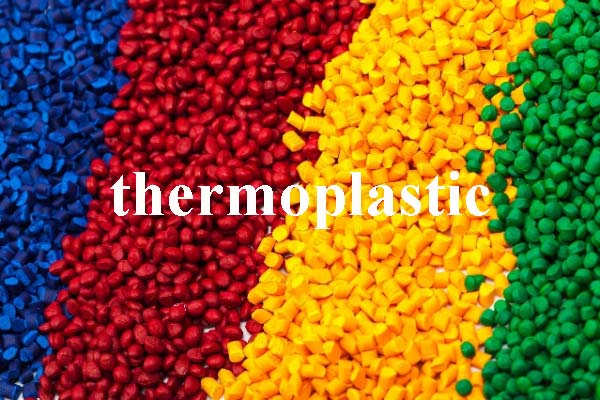
1.1 Definition of Thermoplastic and the Concept of Thermoplastic
Thermoplastics are a type of polymer material that possess the unique characteristic of being able to melt and solidify repeatedly under certain conditions. Unlike thermosetting plastics, which undergo irreversible chemical changes when heated, thermoplastics retain their molecular structure when heated and can be molded and reshaped multiple times.
The concept of thermoplasticity revolves around the material's ability to soften upon heating and harden upon cooling, without undergoing significant degradation or chemical changes. This behavior is due to the presence of weak intermolecular forces in thermoplastics, allowing the polymer chains to move and rearrange upon heating and return to a solid state upon cooling. This property enables thermoplastics to be easily processed and recycled.
1.2 History of Thermoplastics and Production Technology
The origins of thermoplastics can be traced back to the early 19th century when natural materials such as rubber and shellac were discovered to exhibit thermoplastic behavior. However, the development and industrial application of synthetic thermoplastics gained momentum in the 20th century.
Technological advancements played a crucial role in the production of thermoplastics. The introduction of new polymerization techniques, such as the Ziegler-Natta and coordination polymerization, allowed for the production of a wide range of thermoplastic materials with varying properties. The invention of high-pressure and low-pressure polymerization processes further expanded the possibilities in thermoplastic manufacturing.
Over time, significant milestones in thermoplastic production technology were achieved. The development of injection molding in the 1930s revolutionized the mass production of thermoplastic products. Subsequent advancements, including extrusion techniques, blow molding, and thermoforming, further enhanced the manufacturing capabilities of thermoplastics.
1.3 The Importance of Using Thermoplastics in Industry
Thermoplastics have gained immense importance in various industries due to their versatility, adaptability, and numerous advantages over other materials.
One of the key advantages of thermoplastics is their wide range of applications. They are extensively used in industries such as automotive, construction, packaging, electronics, and healthcare. Thermoplastics offer design flexibility, allowing for the creation of complex shapes, intricate details, and precise dimensions. They can be easily molded, extruded, or formed into different forms, including films, fibers, sheets, and 3D-printed objects.
Thermoplastics also offer advantages over traditional materials like metals and thermosetting plastics. They are lightweight, corrosion-resistant, and have excellent electrical insulation properties. Additionally, thermoplastics exhibit desirable mechanical properties, such as high strength, toughness, and impact resistance. Their chemical resistance, thermal stability, and UV resistance further contribute to their suitability for various environments and applications.
The use of thermoplastics has had a profound impact on manufacturing processes. They enable efficient production through techniques like injection molding, where high volumes of complex parts can be manufactured rapidly. Thermoplastics also allow for recycling and reprocessing, promoting sustainability and resource efficiency.
In conclusion, the definition, concept, history, and importance of thermoplastics provide a foundation for understanding their unique properties and wide-ranging applications in various industries. The subsequent sections will delve deeper into the properties, production methods, applications, advantages, and environmental considerations of thermoplastics.
2. Thermoplastic Properties and Characteristics
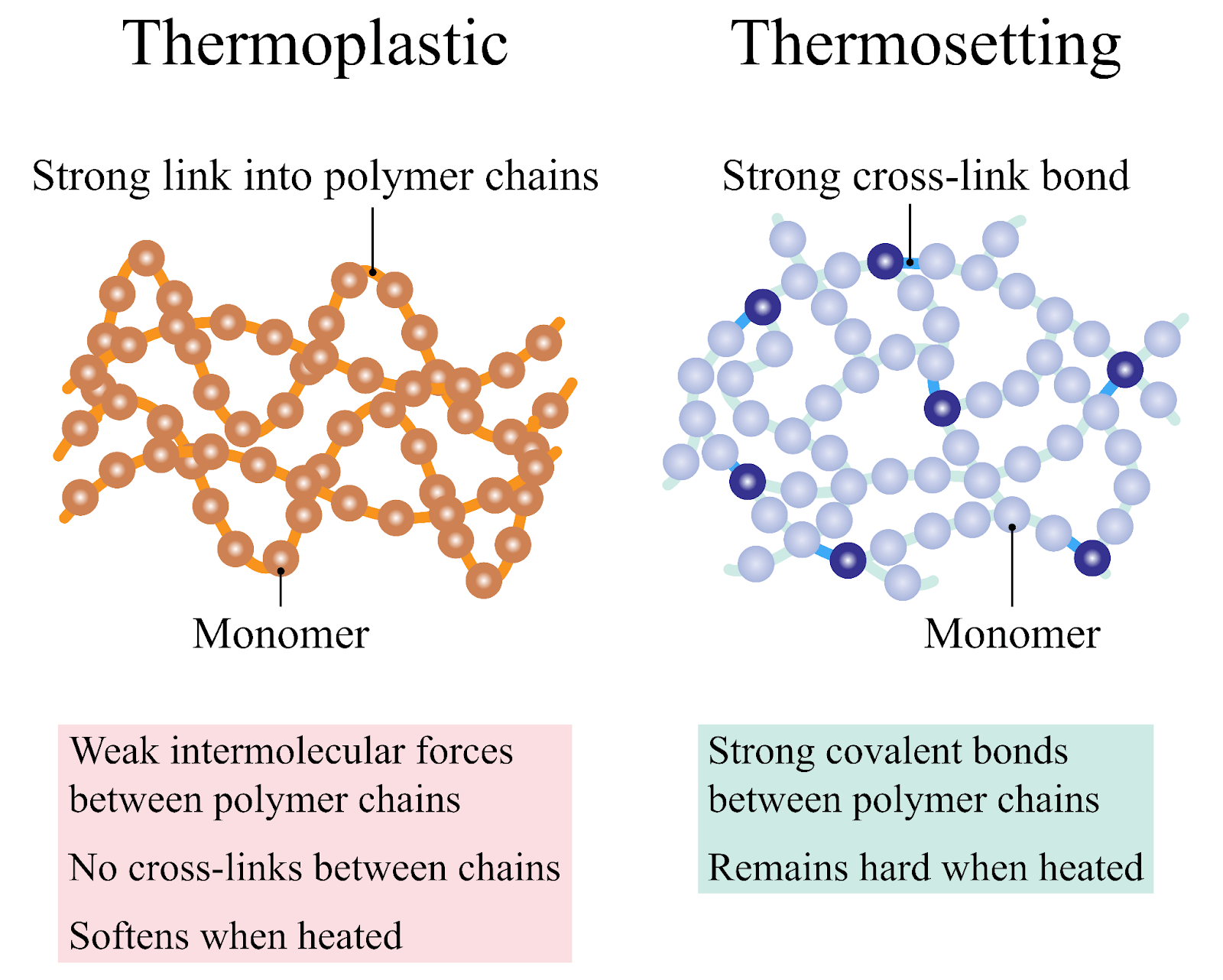
Thermoplastics exhibit a diverse range of properties and characteristics that make them highly versatile and suitable for a wide array of applications. Understanding the appearance, molecular structure, and various types of thermoplastics, as well as the influence of heat capacity and existing polymers, is crucial for comprehending their properties.
2.1 Appearance and Molecular Structure of Thermoplastics
Thermoplastics can have different appearances, ranging from transparent and glossy to opaque and matte. Some thermoplastics may have a crystalline structure, resulting in a translucent or opaque appearance, while others may be amorphous and transparent. The appearance of thermoplastics can be further enhanced through additives, fillers, or surface treatments.
At the molecular level, thermoplastics consist of long polymer chains held together by intermolecular forces. These chains can be linear, branched, or cross-linked. Linear chains provide flexibility and ease of processing, while branched or cross-linked structures contribute to enhanced strength and rigidity. The arrangement and density of polymer chains within the material influence its physical properties, such as strength, stiffness, and impact resistance.
2.2 The Effect of Heat Capacity and Existing Polymers on Thermoplastic Properties
Heat capacity, also known as specific heat, plays a significant role in determining the thermal properties of thermoplastics. Different thermoplastics have varying heat capacities, which affect their ability to absorb and dissipate heat. High heat capacity enables thermoplastics to withstand elevated temperatures and resist deformation or melting, making them suitable for applications involving heat or fire resistance.
Existing polymers used in thermoplastic blends or composites can modify the properties of the base thermoplastic. By incorporating additives or reinforcing materials, such as glass fibers or carbon nanotubes, the mechanical properties of thermoplastics can be enhanced, including tensile strength, modulus, and impact resistance. Additionally, the addition of fillers or reinforcements can improve thermal conductivity, electrical conductivity, and flame retardancy.
2.3 Types of Thermoplastics and Properties of Each Type
There are numerous types of thermoplastics, each with its own unique of properties and characteristics. Some commonly used thermoplastics include:
- Polyethylene (PE): PE is known for its high chemical resistance, low density, and excellent electrical insulation properties. It is widely used in packaging, pipes, and insulation materials.
- Polypropylene (PP): PP offers a combination of high stiffness, chemical resistance, and heat resistance. It finds applications in automotive components, appliances, and packaging.
- Polyvinyl Chloride (PVC): PVC exhibits excellent chemical resistance, flame retardancy, and durability. It is utilized in construction, electrical wiring, and medical devices.
- Polystyrene (PS): PS is lightweight, rigid, and has good electrical insulation properties. It is commonly used in packaging, disposable utensils, and insulation materials.
- Polycarbonate (PC): PC is a transparent thermoplastic with exceptional impact resistance and high heat resistance. It is employed in applications such as safety goggles, electronic components, and automotive parts.
- Polyamide (PA, Nylon): Nylons offer high strength, toughness, and abrasion resistance. They are widely used in textiles, engineering components, and automotive parts.
These are just a few examples, and there are many more types of thermoplastics available, each with its specific properties suited for particular applications.
Understanding the appearance, molecular structure, heat capacity, and different types of thermoplastics is essential for selecting the appropriate material for specific applications. The subsequent sections will explore the production methods, applications, advantages, and limitations of thermoplastics in further detail.
3. Thermoplastic Production Methods
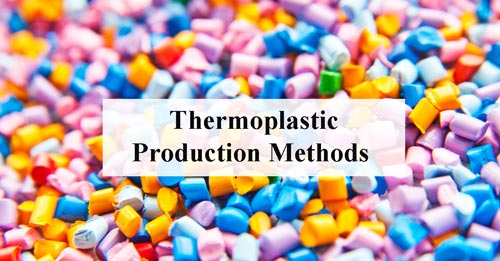
The production of thermoplastics involves various manufacturing techniques that allow for the shaping and forming of the materials into desired products. This section explores different thermoplastic production methods, including casting methods and other common techniques.
3.1 Thermoplastic Casting Methods
Casting methods are widely used in thermoplastic production to create complex shapes and intricate details. The most common casting methods for thermoplastics are injection molding, pressure casting, and casting using the welding process.
3.1.1 Injection Molding Method
Injection molding is a highly popular and efficient method for producing thermoplastic parts in large quantities. It involves injecting molten thermoplastic material into a mold cavity under high pressure. The material solidifies within the mold, taking the shape of the cavity. Once cooled, the mold is opened, and the final product is ejected. Injection molding offers precise control over part dimensions and allows for the production of intricate geometries with excellent repeatability.
3.1.2 Pressure Casting Method
Pressure casting, also known as compression molding or transfer molding, is another casting method used for thermoplastics. In this process, the molten thermoplastic material is placed into a preheated mold cavity, and pressure is applied to force the material to fill the mold. The pressure is maintained until the material solidifies. Pressure casting is suitable for producing parts with intricate shapes, high dimensional accuracy, and excellent surface finish.
3.1.3 Casting Method of Welding Process
The casting method of the welding process, also referred to as fusion casting or fusion welding, involves heating thermoplastic materials to their melting point and then pouring or injecting the molten material into a mold. The mold is typically made of a different material, such as metal, and the molten thermoplastic solidifies within the mold cavity. This method is often used for producing large, thick-walled parts or components that require exceptional strength and durability.
3.2 Other Methods of Thermoplastic Production
In addition to casting methods, there are several other common techniques for thermoplastic production.
3.2.1 Sheet and Sheet Manufacturing Methods
Thermoplastic sheets and sheets are produced through processes such as extrusion or calendering. Extrusion involves forcing molten thermoplastic material through a die, resulting in a continuous sheet of desired thickness and width. Calendering, on the other hand, involves passing the heated thermoplastic material between a series of rollers to form a sheet with consistent thickness. These sheet and sheet manufacturing methods are often used for applications requiring flat or thin plastic materials, such as packaging, signage, and construction.
3.2.2 Extrusion and Penetration Methods
Extrusion is a versatile method used to produce various thermoplastic products, including pipes, tubes, profiles, and filaments. It involves pushing molten thermoplastic material through a die of the desired shape, resulting in a continuous formed product with a consistent cross-section. Extrusion can be performed in various forms, such as single-screw extrusion or twin-screw extrusion, depending on the complexity and requirements of the final product.
Penetration methods, such as blow molding and rotational molding, are used to produce hollow thermoplastic products. Blow molding involves inflating a hollow tube of molten thermoplastic material inside a mold cavity to obtain the desired shape, commonly used for containers and bottles. Rotational molding, on the other hand, rotates a mold containing powdered thermoplastic material to evenly coat the mold walls, creating hollow products with complex shapes, such as tanks and automotive parts.
These various production methods for thermoplastics offer flexibility in manufacturing processes and enable the production of a wide range of products with diverse shapes, sizes, and properties.
Each method has its advantages and is selected based on the specific requirements of the final product.
4. Thermoplastic Applications
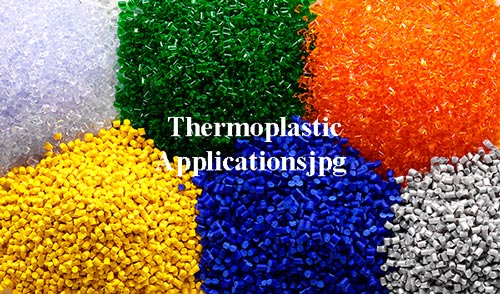
Thermoplastics find extensive use across various industries due to their versatile properties, durability, and cost-effectiveness. This section explores some of the key applications of thermoplastics in different industries.
4.1 Automotive and Sports Equipment Industries
Thermoplastics play a vital role in the automotive industry, where they are used in interior and exterior components, such as dashboards, bumpers, door panels, and instrument panels. These materials offer advantages such as lightweight construction, design flexibility, impact resistance, and improved fuel efficiency. In the sports equipment industry, thermoplastics are utilized for manufacturing helmets, protective gear, skis, snowboards, and other sports accessories due to their high strength, impact resistance, and ability to withstand harsh environmental conditions.
4.2 Electronics and Electrical Industry
Thermoplastics are widely used in the electronics and electrical industry for the production of connectors, insulators, switches, and housing components. These materials offer excellent electrical insulation properties, chemical resistance, and dimensional stability. Additionally, their lightweight nature contributes to reducing the overall weight of electronic devices, while still maintaining durability and reliability.
4.3 Packaging and Food Industry
Thermoplastics play a crucial role in the packaging industry, where they are utilized for manufacturing bottles, containers, films, and closures. These materials offer benefits such as transparency, barrier properties, moisture resistance, and ease of processing. They provide an effective solution for preserving the freshness and extending the shelf life of food and beverages. Thermoplastics also offer advantages in terms of recyclability, enabling the development of sustainable packaging solutions.
4.4 Medical and Pharmaceutical Industries
Thermoplastics have significant applications in the medical and pharmaceutical sectors due to their biocompatibility, sterilizability, and chemical resistance. They are used for producing medical devices, surgical instruments, drug delivery systems, packaging materials, and implants. Thermoplastics in these applications provide properties such as transparency, flexibility, ease of sterilization, and compatibility with various medical procedures.
4.5 Other Applications of Thermoplastics in Industry
Apart from the aforementioned industries, thermoplastics find diverse applications in various other sectors. They are used in construction for manufacturing pipes, fittings, roofing membranes, and insulation materials. Thermoplastics also play a role in consumer goods, including toys, furniture, appliances, and personal care products, due to their aesthetic appeal, durability, and ease of molding. Furthermore, they are employed in aerospace, marine, and defense industries for their lightweight properties, corrosion resistance, and high-performance characteristics.
The versatility of thermoplastics enables their utilization in a wide range of industries, contributing to advancements in product design, performance, and sustainability. As technology and material innovations continue to evolve, the applications of thermoplastics are expected to expand further, addressing the diverse needs of various industries.
5. Advantages and Disadvantages of Using Thermoplastics
Thermoplastics offer numerous advantages that make them desirable materials for various applications. However, they also have certain limitations. This section explores the advantages and disadvantages of using thermoplastics, focusing on their mechanical and thermal properties.
5.1 Advantages and Mechanical Properties
- Lightweight: Thermoplastics are known for their lightweight nature, which makes them highly desirable in industries where weight reduction is crucial, such as automotive and aerospace. This property contributes to improved fuel efficiency, ease of handling, and reduced transportation costs.
- Flexibility and Design Freedom: Thermoplastics exhibit excellent flexibility, allowing them to be easily molded into complex shapes and intricate designs. They offer design freedom, enabling the creation of customized and innovative products that meet specific functional and aesthetic requirements.
- High Strength-to-Weight Ratio: Despite their lightweight nature, thermoplastics possess impressive strength and stiffness. They provide excellent mechanical properties, including high tensile strength, impact resistance, and fatigue resistance, making them suitable for demanding applications.
- Chemical Resistance: Thermoplastics demonstrate resistance to a wide range of chemicals, acids, and solvents. This property ensures their durability and reliability in environments where exposure to corrosive substances is a concern.
- Recyclability: One of the significant advantages of thermoplastics is their recyclability. They can be melted, reshaped, and reused multiple times without significant degradation in their properties. This promotes sustainability and reduces waste generation.
5.2 Advantages and Thermal Properties
- Thermal Stability: Thermoplastics exhibit good thermal stability, enabling them to withstand a broad range of temperatures without significant deformation or degradation. This property is crucial in applications where exposure to high or low temperatures is expected.
- Heat Resistance: Many thermoplastics have excellent heat resistance, allowing them to retain their mechanical properties and dimensional stability even at elevated temperatures. This makes them suitable for applications that involve exposure to heat, such as automotive engine components or electronic devices.
- Easy Processing: Thermoplastics can be processed using various techniques, such as injection molding, extrusion, and thermoforming. They have a relatively low processing temperature, which makes them easier to melt, shape, and form into desired products.
5.3 Disadvantages and Limitations of Thermoplastics
- Lower Temperature Resistance: While thermoplastics offer good heat resistance, they may have limitations when it comes to extremely high temperatures. At elevated temperatures, some thermoplastics can soften or deform, limiting their suitability for high-temperature applications.
- Lower Rigidity: Compared to thermosetting plastics, thermoplastics generally have lower rigidity and dimensional stability. They may exhibit some degree of creep under prolonged stress or load, which can affect their long-term performance in structural applications.
- Limited Chemical Resistance: Although thermoplastics have good chemical resistance, certain aggressive chemicals or solvents can cause degradation or swelling in some thermoplastic materials. It is crucial to consider chemical compatibility when selecting thermoplastics for specific applications.
- Higher Cost: Depending on the specific material and application, thermoplastics can be more expensive compared to other plastic types. However, their advantages in terms of design flexibility, performance, and recyclability often justify the higher initial cost.
Understanding the advantages and limitations of thermoplastics is essential for selecting the appropriate material for specific applications. Despite their limitations, the unique properties and benefits of thermoplastics make them highly versatile and widely used materials in various industries.
6. Safety and Environmental Tips

6.1 Safety during the Production and Use of Thermoplastics
Safety is a paramount concern in the production and use of thermoplastics. Implementing proper safety measures ensures the well-being of workers and minimizes potential hazards. Here are some important safety considerations:
- Ventilation: Adequate ventilation systems should be in place during the production and processing of thermoplastics to prevent the accumulation of hazardous fumes or dust particles. Proper airflow helps maintain a safe working environment and minimizes the risk of respiratory issues.
- Personal Protective Equipment (PPE): Workers should use appropriate personal protective equipment, such as gloves, safety goggles, masks, and protective clothing, to protect themselves from potential chemical exposures, physical hazards, or heat-related risks.
- Machinery Safety: Operators must be trained in the safe operation of machinery used in thermoplastic production processes. Regular maintenance and inspections of equipment should be conducted to ensure their proper functioning and reduce the risk of accidents.
- Material Handling: Proper procedures for handling, storage, and transportation of thermoplastic materials should be followed to prevent injuries. This includes using appropriate lifting techniques, securing materials during transport, and storing them in designated areas away from potential hazards.
- Emergency Preparedness: Adequate emergency response plans should be in place, including protocols for handling spills, fires, or other emergencies involving thermoplastic materials. Training sessions and drills should be conducted to ensure that workers are prepared to respond effectively in case of an incident.
6.2 The Impact of Thermoplastics on the Environment and Biological Stability
Thermoplastics have both positive and negative environmental aspects, and understanding their impact is crucial for sustainable practices. Consider the following points:
- Recycling and Waste Management: One significant advantage of thermoplastics is their recyclability. Recycling programs and initiatives should be encouraged to minimize waste and promote the reuse of thermoplastic materials. Proper waste management practices, including sorting, collection, and disposal, are essential to prevent environmental pollution.
- Energy Consumption: The energy required for the production, processing, and recycling of thermoplastics should be carefully managed. Implementing energy-efficient technologies and practices can help reduce the environmental footprint associated with thermoplastic manufacturing processes.
- Biodegradability: While some thermoplastics are biodegradable, many commonly used thermoplastic materials are not readily biodegradable in natural environments. Proper disposal methods should be followed to prevent littering and environmental contamination.
- Environmental Regulations: Compliance with local and international environmental regulations is crucial for the responsible use of thermoplastics. Manufacturers should stay updated on relevant regulations and strive to minimize the release of harmful substances during the production and use of thermoplastic materials.
- Sustainable Material Selection: Consideration should be given to the environmental impact of thermoplastic materials during the selection process. Opting for eco-friendly alternatives, such as biodegradable or bio-based thermoplastics, can help mitigate the environmental impact associated with their use.
Promoting safety and implementing environmentally conscious practices in the production and use of thermoplastics contribute to sustainable development and a safer working environment. By adopting responsible approaches, the industry can minimize negative impacts and maximize the benefits of thermoplastic materials.
7. Recent Research and Innovations in the Field of Thermoplastics
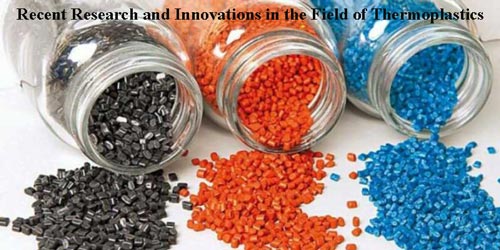
7.1 Developments and Advances in Thermoplastic Production Technology
The field of thermoplastics has witnessed significant developments and advancements in production technology. Researchers and industry experts continue to explore new techniques and processes to enhance the efficiency, quality, and sustainability of thermoplastic manufacturing. Some notable developments include:
- Additive Manufacturing: Additive manufacturing, also known as 3D printing, has revolutionized the production of thermoplastics. This technology allows for the creation of complex geometries and customized designs, opening up new possibilities for various industries. Researchers are constantly improving the additive manufacturing process to enhance print speed, material compatibility, and surface finish.
- Sustainable Manufacturing: There is a growing emphasis on sustainable manufacturing practices in the thermoplastics industry. Researchers are exploring alternative feedstocks, such as bio-based or recycled materials, to reduce the reliance on fossil fuels and minimize the environmental impact of production processes. Additionally, efforts are being made to optimize energy consumption, reduce waste generation, and develop eco-friendly processing techniques.
- Nanotechnology Applications: Nanotechnology is being increasingly integrated into thermoplastics to enhance their properties and performance. By incorporating nanoparticles, such as carbon nanotubes or graphene, researchers have achieved improvements in mechanical strength, electrical conductivity, thermal stability, and barrier properties of thermoplastic materials. These advancements have opened up new avenues for applications in various industries, including electronics, aerospace, and automotive.
7.2 New Research in the Field of Thermoplastic Properties and Applications
Ongoing research in the field of thermoplastics focuses on exploring their properties and expanding their applications in different industries. Here are some areas of research:
- Enhanced Mechanical Properties: Researchers are investigating methods to improve the mechanical properties of thermoplastics, such as increasing their tensile strength, impact resistance, and durability. This involves incorporating reinforcements like fibers, nanoparticles, or microfillers, as well as optimizing processing techniques to enhance the overall performance of thermoplastic materials.
- Thermal Conductivity and Heat Dissipation: Efforts are underway to enhance the thermal conductivity of thermoplastics, making them suitable for applications requiring efficient heat dissipation. Researchers are exploring the incorporation of thermally conductive fillers and developing novel processing techniques to improve the heat transfer capabilities of thermoplastic materials.
- Smart and Functional Thermoplastics: The development of smart and functional thermoplastics is an area of active research. This involves integrating sensors, actuators, or self-healing properties into thermoplastic materials, enabling them to respond to stimuli or exhibit advanced functionalities. These materials have potential applications in fields such as aerospace, robotics, and biomedical engineering.
- Sustainable and Biodegradable Thermoplastics: Research efforts are directed towards the development of sustainable and biodegradable thermoplastic materials. This includes exploring bio-based feedstocks, optimizing production processes to reduce environmental impact, and enhancing the biodegradability of thermoplastics. These eco-friendly alternatives aim to address the environmental concerns associated with conventional thermoplastics.
Ongoing research and innovations in thermoplastics are expanding their capabilities, improving their properties, and broadening their applications in diverse industries. By pushing the boundaries of material science and manufacturing technology, researchers are unlocking new possibilities for the use of thermoplastic materials in various sectors.
In conclusion, thermoplastics have emerged as versatile and widely used materials in various industries. They possess unique properties that make them desirable for numerous applications. Throughout this article, we have explored the definition of thermoplastics, their molecular structure, and the concept of thermoplasticity, which allows them to melt and solidify repeatedly under specific conditions.
The history of thermoplastics has shown significant advancements in production technology, leading to the development of various casting methods and other production techniques. These methods have enabled the efficient and cost-effective manufacturing of thermoplastic products.
Thermoplastics find extensive applications in industries such as automotive, sports equipment, electronics, packaging, food, medical, and pharmaceuticals. Their properties, including mechanical strength, chemical resistance, and thermal stability, contribute to their suitability for these diverse sectors.
The advantages of using thermoplastics are evident in their mechanical and thermal properties. They offer design flexibility, lightweight characteristics, and excellent recyclability, making them a preferred choice over other materials. However, it is important to consider the limitations and disadvantages of thermoplastics, such as their susceptibility to heat deformation, lower heat resistance compared to thermosetting plastics, and limited chemical resistance in some cases.
Safety is a crucial aspect to consider during the production and use of thermoplastics. Manufacturers must adhere to proper safety protocols and guidelines to ensure the well-being of workers and minimize potential hazards. Additionally, the environmental impact of thermoplastics is a growing concern, prompting the exploration of sustainable manufacturing practices and the development of biodegradable alternatives.
Recent research and innovations in the field of thermoplastics have focused on enhancing production technology, exploring new properties, and expanding their applications. Developments in additive manufacturing, sustainable manufacturing practices, and nanotechnology applications have opened up new possibilities for thermoplastics. Ongoing research aims to improve their mechanical properties, thermal conductivity, and functionality, while also focusing on sustainable and biodegradable alternatives.
In conclusion, thermoplastics have transformed numerous industries, offering a wide range of benefits and opportunities. Continued research and advancements in production technology will further enhance the capabilities of thermoplastics, making them even more valuable in the future. As industries strive for sustainability and performance, thermoplastics are poised to play a pivotal role in shaping the materials landscape.
Read More :
Advantages of Polyethylene Tanks:
Polyethylene Septic Tank
Polyethylene Pipe | HDPE PIPES
Polyethylene Pipe (PE pipe)
Polyethylene fittings
Polyethylene manhole